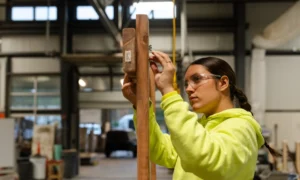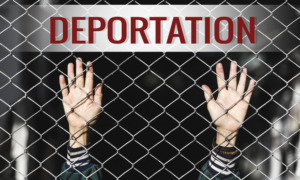We hear it all the time. We hear it from the podium and the pulpit, from policymakers and pundits: Children are our future. Our national well-being is directly proportional to how well children and adolescents grow, learn and thrive.
So, how is it going with America’s kids? In a nation that values using scientific data to inform policy decisions, the answer is surprisingly murky. We have so many attempts to measure the health and well-being of our nation’s kids that it is difficult to see the forest for the trees.
Here are a few pieces of data that look chilling when taken one by one, and downright ominous if blended into a comprehensive portrait:
• According to the National Center for Children in Poverty, some 12 million kids live in “poor” families – flat out below the federal poverty line, which is $19,350 for a family of four. Another 28 million live in families that are “low-income,” which is defined as living at two times the federal poverty line. Altogether, nearly 40 percent of children 17 or younger are in poor or low-income families.
• According to University of Minnesota professor Michael Resnick, speaking at the 2005 White House Conference on Youth, one out of 10 teenagers suffers from mental illness “severe enough to cause some level of impairment.”
• In Search Institute’s studies of youth in the United States, we look beyond single incidents of high-risk behaviors, tabulating engagement in patterns of behavior like alcohol use, tobacco use, violence, anti-social behavior and school failure. By “pattern,” we mean three or more occurrences in the past 12 months.
In a 2003 Search study of more than 148,000 youth between 12 and 18, 65 percent reported one or more of these behavior patterns.
There are other data sets we could look at, including the number of kids who are victims of physical or sexual abuse, or who drop out of school.
What I see in all of this is too much lost or compromised potential. For a nation of wealth, it’s a mediocre portrait.
Then consider that, according to a new book by economist Juan Enriquez, the federal government spent $2,106 per child on services for youth in 2000, but $21,122 per adult over age 65 for services for that population. There are 78 million baby boomers moving into retirement. Educated, active and mobilized, this voting bloc will continue to place high demands on the federal budget. Unless we find a way for our nation to fall in love with its kids, the dollar ratio will only worsen.
The point is obvious: We’ve got a societal problem that cannot be fixed by continuing the American tradition of programmatic solutions targeted to kids. That’s only part of the solution. The well-being of our children depends on changing their contexts – the policies, people, places and settings that shape their economic and developmental fortunes.
It is time to talk about the complex and messy issue of social change, of altering how we go about the business of nurturing human capital. A helpful first step would be to create a national report that shifts the focus from indicators about kids to a focus on contexts. Here are some candidates for indicators that place accountability where it belongs:
• The percentage of the federal budget spent on children and youth.
• The number of times children and youth are mentioned in the president’s State of the Union address.
•The percentage of news media stories that cast youth in a favorable light.
• The percentage of cities that intentionally promote intergenerational connections, versus the percentage that promote age segregation.
• The percentage of neighborhoods that have created a sense of trust across multiple households.
• The percentage of public schools with funding adequate for meeting their educational and human development objectives.
• The average starting salaries for public school teachers and for youth workers.
• The percentage of towns and cities placing a high priority on youth engagement.
• The percentage of communities that have articulated a community-wide vision for child and adolescent development.
• The percentage of kids who have access to high-quality after-school and other youth development programs.
• The number of children who have access to high-quality day care.
• The number of politicians who run for election on a pro-child, pro-youth agenda.
A national report card built on these indicators would tell a pathetic story. It is a story we have to tell over and over again, until it propels us to deal with our national mediocrity.































